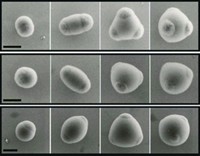Advertisement
Grab your lab coat. Let's get started
Welcome!
Welcome!
Create an account below to get 6 C&EN articles per month, receive newsletters and more - all free.
It seems this is your first time logging in online. Please enter the following information to continue.
As an ACS member you automatically get access to this site. All we need is few more details to create your reading experience.
Not you? Sign in with a different account.
Not you? Sign in with a different account.
ERROR 1
ERROR 1
ERROR 2
ERROR 2
ERROR 2
ERROR 2
ERROR 2
Password and Confirm password must match.
If you have an ACS member number, please enter it here so we can link this account to your membership. (optional)
ERROR 2
ACS values your privacy. By submitting your information, you are gaining access to C&EN and subscribing to our weekly newsletter. We use the information you provide to make your reading experience better, and we will never sell your data to third party members.
Materials
Constructing Hybrid Nanoparticles
Nanoscientists use concepts from total synthesis of organic molecules to build complex nanoparticles
by Bethany Halford
November 21, 2011
| A version of this story appeared in
Volume 89, Issue 47
To create complex colloidal hybrid nanoparticles—materials with various types of nanoparticles fused together—nanoscience researchers at Pennsylvania State University are taking a cue from their colleagues in organic synthesis. Guided by mechanistic considerations, Raymond E. Schaak, Matthew R. Buck, and James F. Bondi use chemical transformations to tack together simpler pieces of the structure in a predictable manner (Nat. Chem., DOI: 10.1038/nchem.1195). “We are trying to bring the elegance of organic total synthesis to the world of inorganic nanostructures,” Schaak tells C&EN. “We approach the synthesis in a stepwise manner; identify plausible reaction mechanisms; and develop, define, and exploit unique solid-state analogs of concepts that underpin organic synthesis but that are not typically in the nanomaterials chemist’s toolbox, such as chemoselective and regioselective reactions, coupling chemistry, and substituent effects.” For example, the researchers create gold-platinum-iron oxide hybrid nanoparticles from the reduction of gold ions in the presence of Pt-Fe3O4. One might expect the resulting gold nanoparticle to fuse to the Pt, the Fe3O4, or both regions of the particle, but the Penn State team found that the gold particle fused exclusively to Pt, demonstrating regioselectivity in their synthetic scheme.





Join the conversation
Contact the reporter
Submit a Letter to the Editor for publication
Engage with us on Twitter